Roleplaying is a way of creating an interactive story where you and others player can create your own narratives.
Although you’ll never see a quest, mission, or reward ingame for roleplay, it’s an activity that many MMO and SWTOR players enjoy and sometimes even base their gameplay around.
Contents
Basics of Roleplay (RP)
Roleplay allows you to create and explore your character in ways that the game doesn’t quite provide. Roleplaying is a way to “act” as your character with others, as if you were in a play or a drama – and since it s all created by players like you, it doesn’t have to follow the strict guidelines of the game.
For example – you could roleplay as an Imperial Trooper – a class that SWTOR doesn’t actually provide as a class choice in the game. Or you could roleplay as a merchant, a droid mechanic, or of course, any of the classes that actually exist like a Jedi or a Sith. You can also roleplay outside of the class storylines – if you are roleplaying a Trooper, you don’t have to be a member of Havoc Squad. If you’re a Jedi – you don’t have to follow the exact storyline’s path of the Jedi Knight or Jedi Consular. If you’re an inquisitor, you don’t have to be a slave – if you’re an agent – you don’t even have to be a member of the SIS – maybe you you’d rather work for an independent organization instead.
Character Biography
Before you start roleplaying, it’s smart to make at least a simple biography of your character. This will help you share your character with others, and give you a guideline in how they might react in certain situations. A biography can be as short or as long as you’d like it, but usually includes these things…
A visual description. What color is their hair? Their eyes? What do they like to wear? This doesn’t have to match up perfectly with what your character is like ingame, but it’s usually smart to keep them similar.
For example, if you are dressed like a Jedi ingame, people will assume you’re a Jedi – so if you want to portray your character as a civilian, you might want to ditch the robes and the saber while roleplaying.
You might also want to explore your character’s background and current occupation in your biography. Did they come from Alderaanian nobility? Did they attend the Sith Academy on Korriban, but got kicked out? Did they grow up in the seedy underbelly of Nar Shaddaa? It’s also good to pick them out a profession and decide where they sit in that role – if you’re a Jedi, decide if you are a Padawan, a Knight or a Master and lookup exactly what those ranks mean, first. If you’re a bounty hunter, are you a novice, fresh out the space port with no kills under your belt, or are you a seasoned veteran who’s gotten so many Hutt Contracts they’ve lost count?
A biography also details a bit of your character’s personality. Are they impulsive, or calm? Do they get angry easily? Are they friendly, cruel, shy, or outgoing? A good way to help you decide what your character might be like, is to ask yourself hypothetical questions. What would my character do if a gunfight broke out in the cantina they were in? If offered credits of a dirty job, would they take it, or leave it? If Emperor Valkorian offered them eveyrthing if they would only kneel, would they?
Character Background
One of the issues in roleplay is that you are no longer the main character in a single-character story – your character will meet up with other player’s characters and you might have to adjust your story to fit. For example, we can’t all be members of the Jedi Council, we can’t all be the leader of Havoc Squad, and we can’t all be Emperor Valkorian’s chosen favourite.
When deciding what your character is, try not to choose a role that may conflict with other’s choices – and understand, if you do choose a unique role, you may need to adjust your story or at least discuss it first, with your roleplay buddies. For example, if you wanted to roleplay as The Mysterious Emperor of the Sith – your roleplay partners might like the idea and accept it, or they might dislike that you are trying to claim a role that’s already so powerful, and already so defined by the story. Try to also avoid claiming relation to any existing characters like Satele Shan or Darth Marr
Speaking of power – one thing you want to consider when developing your character, is not to make them too powerful, too likable, too beautiful, or too perfect. Keep in mind roleplaying your character should be a way of having fun and being creative with others – not being the best #1 Sith or Jedi in the galaxy. Characters that are too.. anything, really, are often called “Mary Sue” characters – they’re the youngest to ever do what no one has done before, have unrealistic abilities, or are just too darn perfect. If you’re interested in trouncing your enemies and truly being the best of the best, try checking out PvP instead.
Roleplay & SWTOR Lore
While roleplaying, it’s always good to have a basic idea of the lore you are roleplaying. For example, if you want to roleplay as a Chiss, you might want to research online about their background first.
For example, if you roleplay as a traditional Chiss, you’ll need to know about the complicated politics and social aspects of Csilla, the Chiss homeworld. Foe example, did you know the Chiss were the first species to ally with the Empire? If you’re playing as a non-traditional Chiss, for example a baby Chiss dropped on a doorstep, you’ll still need to know some basics, like the fact that they have red eyes and mature much more quickly than humans – a ten year old Chiss might be as mature as a 20-year old human.
This goes not only for the race you choose to play, but any organizations you choose to be a part of. If you choose to be part of the Jedi, make sure you’re not running around killing peole for fun, because the Jedi’s lore would never accept that. If you choose to join the Sith, have a good idea of the trials you would have to endure to get there, including the academy and any apprenticeships you may have had.
It’s impossible for everyone to know everything – if you see someone acting out of lore, you can send a nice message to them to let them know about the lore, or you can just choose to ignore it and go along. If you really dislike how your roleplay partner is handling lore… it might be time for you to find a new partner.
Forum & Ingame Roleplay
There are two main ways to roleplay – on forums, purely through text as if you were writing a novel with other people, or ingame, using a combination of the chat system and the visual aspects of the game like the environment.
In both forms, it’s important to keep in mind that roleplay is a give-and-take game. Try not to control other people’s characters, or to decide their fates. For example, if you decide to shoot at another character, give that person a chance to decide what they want to happen to their character. For example, don’t say “Joe, shoots at Bob, and kills him.” Joe would want to give Bob a chance to decide, if he wants his character to die – or even if he wants him to get hit at all. You might instead type, “Joe, shoots at Bob, hoping to kill him!” and then Bob could reply “Bob dodges out of the way and ducks behind the counter.” That way, you’re not prematurely ending your roleplay, and you’re giving others a chance to react to what you do. Once you get more familiar with your rolepaly partner, you can judge a little better how much control they’re ok with giving up.
Forum Roleplay
If you’re interested in forum roleplay, search oneline for “swtor.com roleplay”. This will lead you to a roleplaying forum on the official swtor.com. Many guilds have their own private roleplay forums.
Forum roleplay works in turns – you might make a post, then you wait and allow your roleplay partners to get a chance to reply, and then you reply to their reply, and so on. Together you create a story that can be read as a whole, each post showing a snippet focused on the poster’s character. The first post often is an introduction. It might say something like
“The Captain walked into the loading dock. His ship was fully stocked, and ready to go, but he still needed crew. He’d put out wanted adds across the galaxy, offering a bounty of one million credits to any able-bodies willing to go an a daring adventure into uncharted space. He stood, tapping his foot, waiting for the new recruits to arrive…”
The first post invites you to come an join the story, and what the story will be about. The example is about a smuggling operation – so your reply might be about your character seeing the wanted ad, and asking the captain if you can join his crew. People often share or link their biography in their first post, so other roleplayers can get a good idea of what their character looks like.
Some roleplays are open to the public, some have already been filled up, some roleplays are private. Make sure to ask if you can join a forum roleplay before jumping in.
Forum roleplay can be great because you can write as much as you want, with whatever formatting you want. Your roleplay buddies do not have to be on at the same time as you, and a roleplay can be stretched across weeks or even months. The downside to forum roleplay is that you do not get as many “visuals” as ingame roleplay, and that they can “fizzle out” easily if your roleplay partners forget to reply or wander away.
Ingame Roleplay
Ingame roleplay is roleplaying while logged in on the character you want to roleplay as. You can use the /say channel to talk as your character to others in your immediate vicinity, and the /e channel to write about your character’s actions, for example “/e goes to get a drink.” would show in the chat as “Bob goes to get a drink.”
Roleplaying ingame is a lot faster than forum roleplay, but you still take turns with your roleplay partners, giving them a chance to reply in chat before you move on.
The /say channel works cross-faction, but the /e channel can only be seen by your faction. So if you are a Republic character, roleplaying with an Imperial character, stick to the /say channel.
Keep the /say and /e channels are purely in-character roleplaying channels – if you want to talk to your roleplay partner out of character, you could use party chat, or whisper them.
If you want to share information that’s not in-character, you can also type it in brackets or precede with the letters OOC: Out of Character, so people know you are sharing information, not roleplaying.
The perks of roleplaying ingame also include all the visual things SWTOR has to offer. This includes three main things: your environment, your character, and emotes.
Environment
Your roleplaying environment is the actual location you are roleplaying in. If you want to do a Jedi roleplay, it might be good to head to Tython where the Jedi Temple is located. If you want to roleplay doing some reaserch, you might want to head to the library in the Jedi Temple. Feel free to either ignore or acknowledge any NPCs that might be in the room – for example, wandering Jedi NPC, might be a good person to ask for help finding the holorecord you need. You can also roleplay as an NPC to add more characters to your roleplay – just make sure to acknowledge in some way or another, that you’re roleplaying as the NPC and not your character. If you’re roleplaying in a public area, keep in mind others may want to join in, or troll. There are lots of private instanced quest areas you can use if you don’t want interruptions, or you can go to your ship or stronghold for uninterrupted roleplay.
Character
Your character is the first thing others will see about you. People DO notice what you are wearing in roleplay, just like people judge you in real life. If you walk into a cantina wearing Jedi Robes, people will assume you’re roleplaying as a Jedi and comment on it. If you’re wearing a metal bikini, you’ll have a much harder time convincing people that you’re a seasoned trooper fresh off the field. Many people keep “roleplay clothes” in their inventory, or set up a roleplay costume in the outfit designer.
Emotes
Lastly, SWTOR offers a lot of special emotes your character can use to “show” what they are doing. The most useful one is /chair – it will allow your character to hover-squat, as if they were sitting on something. If you align them up with a chair, it will look like they are sitting down. There’s also /sit, /sleep, /kneel, /dance, and a whole bunch of fun Cartle Market emotes like /sing, /aircontrol and even /sweep. Using these at the right time can really help immerse your character in the story.
Roleplay Conflict
There are two ways to resolve a conflict or an action in ingame roleplay. For example, your character wants to slice into a computer system and steal some information. How do you know if the succeed or not?
Discuss Options
The first way is simply to discuss it with your roleplay partners. You might argue that your character is a skilled slicer, and would easily succeed, and your partner agrees. Or your partner might argue that the system is incredibly well secured, and you would never be able to hack it. This system is very give-and-take, and it can be very fun discussing what the potential outcomes might be until you find one that’s either the most realistic.. or the most fun.
/roll
The second method is to use the /roll system. Typing /roll will roll a virtual die from 1-100 that anyone in yopur party can see. Maybe you would have to roll over 50 to succeed at slicing. Maybe because your character has studied slicing, they get an automatic +10 to their roll. These types of roll rules are usually defined before you start roleplay, and have a system of checks and balances. The downside is you may not always get what you want – the upside is things are always surprising. There’s no “correct” way to resolve conflicts – both ways can be a lot of fun.
Duel
Ingame roleplay also offers you the chance to take advantage of the ingame combat system – but only if you want to. Players in SWTOR often do not consider “ingame combat” part of roleplay. If you want to duel or fight someone in roleplay, confirm with them whether they’d rather have a SWTOR duel, or if they’d rather roleplay the fight it in text.
Finding Other Roleplayers
Finding other people to roleplay with can be tough if you don’t know where to look. Although the server designations have been removed, the servers that have the most roleplayers are Buh-gair-in Colony on the West Coast, The Ebon Hawk on the East Coast, and the Pro-gen-ih-tor in the EU.
I highly suggest searching for a roleplay-based guild – some guilds even have nights dedicated to roleplay that anyone guildmates join in on.
Locations you can check ingame for include the Slippery Slopes Cantina on Nar Shaddaa, the inner cantina on the fleet, the Jedi Temple on Tython, the steps of Korriban, and occasionally the homeworlds of Coruscant and Dromund Kaas. Head to one of these places, and makes some comments in the /say and /e channels.. this lets people know you’re looking for roleplay – or if you see others talking in those channels, ask if you can join in. Of course, you can also ask in general chat if anyone is interested in joining you for roleplay.
Building a Star Wars Old Republic character can be a lot of fun, and sharing your character with others through roleplay can be a great way to improving your writing and storytelling skills. If you’ve never roleplayed before, remember that everyone had to start somewhere. Start with your character biography, and then start looking for a roleplay partner to join up with!






 Questions or comments? Feel free to send me a message on Twitter
Questions or comments? Feel free to send me a message on Twitter 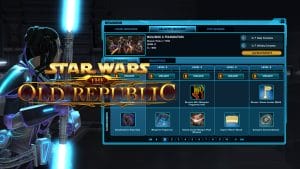 Galactic Seasons Guide and Rewards – Season 6, Building a Foundation!
Galactic Seasons Guide and Rewards – Season 6, Building a Foundation! Date Night Guide and Achievement Rewards – Lana, Theron, Koth, Arcann romance!
Date Night Guide and Achievement Rewards – Lana, Theron, Koth, Arcann romance!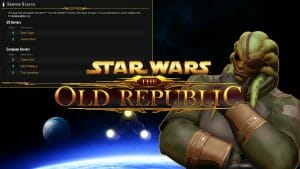 How to Pick a Server
How to Pick a Server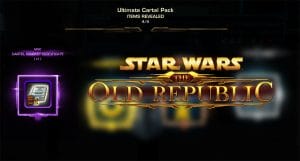 How to Get Cartel Market Certificates
How to Get Cartel Market Certificates What can you do with Cartel Market Certificates?
What can you do with Cartel Market Certificates? Tips for Returning SWTOR Players (2024)
Tips for Returning SWTOR Players (2024)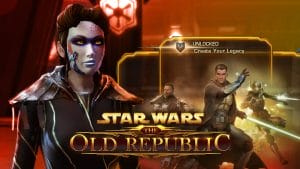 Legacy Guide
Legacy Guide
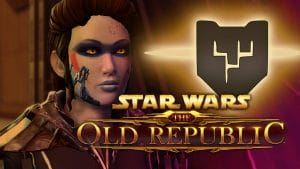

 Twitter @swtorista
Twitter @swtorista Reddit /u/swtorista
Reddit /u/swtorista Discord Swtorista#0153
Discord Swtorista#0153 Email swtorista@gmail.com
Email swtorista@gmail.com Youtube Swtorista
Youtube Swtorista Twitch Swtorista
Twitch Swtorista Patreon
Patreon